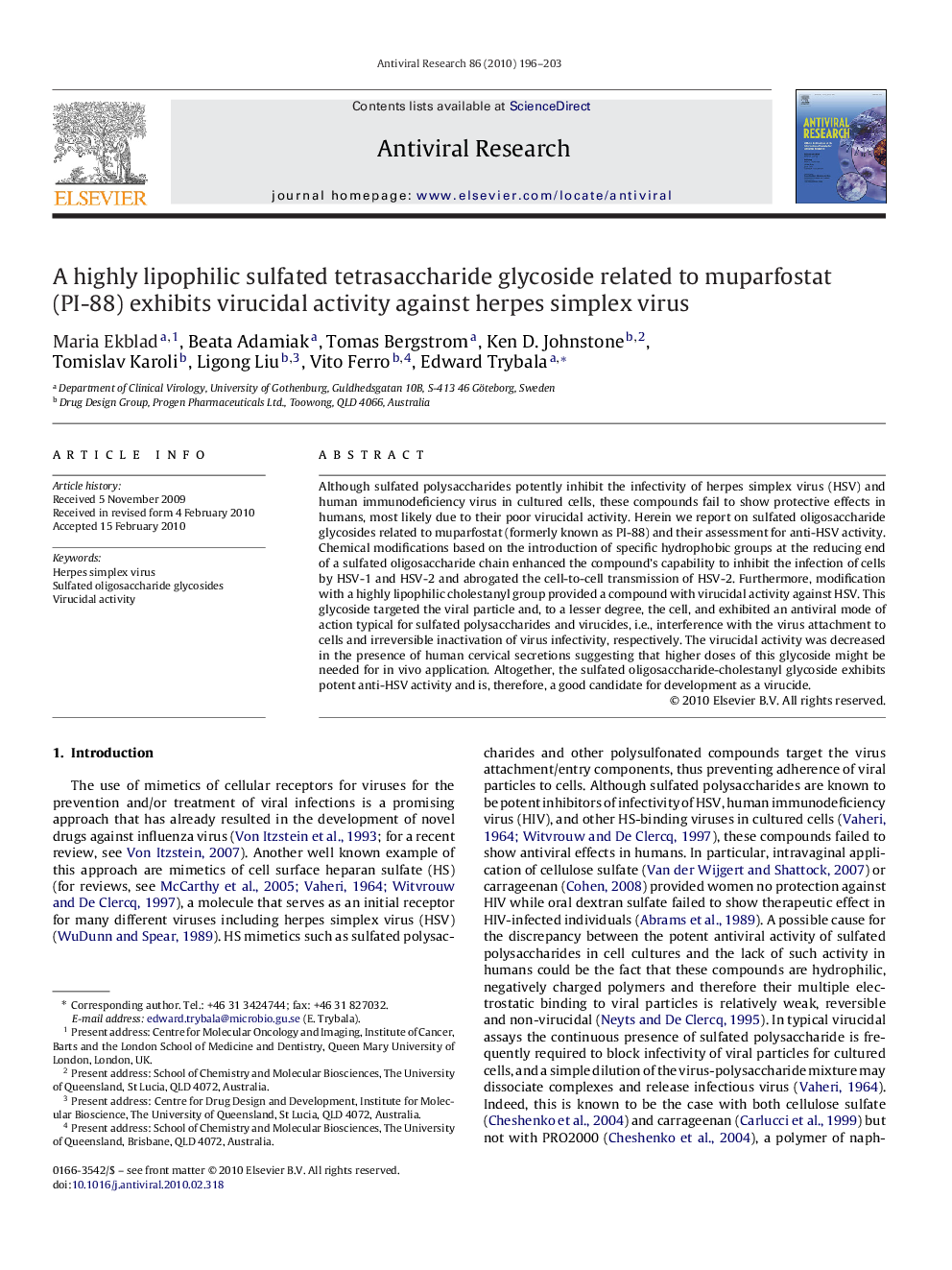| Article ID | Journal | Published Year | Pages | File Type |
|---|---|---|---|---|
| 2510929 | Antiviral Research | 2010 | 8 Pages |
Although sulfated polysaccharides potently inhibit the infectivity of herpes simplex virus (HSV) and human immunodeficiency virus in cultured cells, these compounds fail to show protective effects in humans, most likely due to their poor virucidal activity. Herein we report on sulfated oligosaccharide glycosides related to muparfostat (formerly known as PI-88) and their assessment for anti-HSV activity. Chemical modifications based on the introduction of specific hydrophobic groups at the reducing end of a sulfated oligosaccharide chain enhanced the compound's capability to inhibit the infection of cells by HSV-1 and HSV-2 and abrogated the cell-to-cell transmission of HSV-2. Furthermore, modification with a highly lipophilic cholestanyl group provided a compound with virucidal activity against HSV. This glycoside targeted the viral particle and, to a lesser degree, the cell, and exhibited an antiviral mode of action typical for sulfated polysaccharides and virucides, i.e., interference with the virus attachment to cells and irreversible inactivation of virus infectivity, respectively. The virucidal activity was decreased in the presence of human cervical secretions suggesting that higher doses of this glycoside might be needed for in vivo application. Altogether, the sulfated oligosaccharide-cholestanyl glycoside exhibits potent anti-HSV activity and is, therefore, a good candidate for development as a virucide.
